5 Minute Guide to Sewing Machine Feet
Our latest 5 Minute Guide is all about feet! That’s right — we’re finally sharing all of our favorite shoes, sandals, and socks. Just kidding! We’re covering everything you’ve ever wanted to know about sewing machine feet for quilters, including a list of the best feet a quilter can have in their toolkit and a video from a sewing machine expert.
Sewing machine feet are actually just like our feet. Our feet help get us where we need to go, and sewing machine feet help get your fabric where it needs to go, which is through your sewing machine. Chances are good that as a quilter, you rely heavily on your quarter inch foot and walking foot. But if you’ve ever been to a quilt shop, you may have seen a huge display of feet and wondered which ones are useful for quilters.
This article may be part of our 5 Minute guide, but if you watch our expert video from Gayle Donahue, it will absolutely take more than 5 Minutes to read. If you’re in a rush, scroll down to get a quick sense of each foot and come back with some popcorn when you have time to watch our video. Trust us when we say that you’ll want to make time to read this whole article! The next time you need a new foot, you’ll be able to walk into any quilt shop with confidence.
You Might Also Like...
Meet a Sewing Machine Foot Expert: Gayle Donahue of BERNINA of Naperville
Gayle Donahue isn’t just a sewing machine dealer. She’s also a quilter, talented cosplayer, and former corporate BERNINA employee. After working as a successful BERNINA Sales Manager, she moved up the ladder to become the Marketing Manager of Promotions and Sponsorships for BERNINA. To say she knows sewing machines inside and out is an understatement! Gayle is now the co-owner of my own local quilt shop, BERNINA of Naperville (one of the top 10 BERNINA dealers in the Midwest), and she has a very popular YouTube channel.
We asked Gayle to answer some questions for us about sewing machine feet (did you know that BERNINA alone has almost 100 different feet?), and she was happy to help! Check out her video here to see sewing machine feet for quilters in action, then keep reading to learn a bit more about each type!
Trending patterns!
Low Shank vs. High Shank Machines
When buying a sewing machine foot, especially if you’re looking online instead of in a shop, you may see the foot called low shank or high shank. Huh? What’s a shank? Does this even matter when buying a foot? Yes, it definitely does!
The shank is the vertical metal bar that your sewing machine feet attach to. On low shank machines, that bar measures 3/4″ or less from the center of the screw to the bottom. On high shank machines, that bar measures 1″ or more. That may seem like a small difference, but it will not fit correctly if you purchase a high shank foot for a low shank machine.
Most domestic sewing machines (meaning the kind of sewing machine you have in your home, as opposed to an industrial sewing machine you might find in a factory) are low shank. But some high-end machines, especially ones that are popular with quilters who want more thoat space, may be high shank. For some brands, this may not be important, like BERNINA which has proprietary feet that only work with BERNINA machines. So be sure to consult your sewing machine manual to confirm is your machine is low shank before making any purchases, or head to your local sewing machine dealer.
Feet for Piecing vs. Feet for Quilting
There are hundreds of different sewing machine feet used for different purposes, machines, and brands. But there are two primary uses for sewing machine feet for quilters— piecing and quilting. For all the brand-new or aspiring quilters reading this, here’s the difference. Piecing is when you sew together pieces of fabric to create a quilt top. Quilting is the stitches that connect all three layers of a quilt (the top, batting, and back).
If you sew garments, you might be familiar with many more feet than we’ve included on our list. But our primary focus covering feet that help with quilting techniques or quilt-related projects.
NOTE: For this article, we chose to link to sewing machine feet that the Suzy Quilts team uses. Because our team sews on BERNINA machines, we link to BERNINA feet for brand consistency in this post. Different brands and machine models require different feet, so as a reminder, we recommend consulting your sewing machine manual or local sewing machine dealer to be sure you are purchasing a foot that will work correctly for your particular machine. This is not a sponsored post, and under each foot you will also find a link to a search page showing many different brands of each type of foot.Universal Foot
While this foot isn’t necessarily a must-have for quilters, it is most likely the type of foot that any sewing machine you buy will come with. Some universal feet accommodate just a straight stitch, but some also accommodate a zigzag stitch. A sewing machine foot that is described as universal is meant to be a catch-all. A beginner or occasional sewist should be able to complete many projects with this foot alone. However, it’s important to note that just like all of the feet for piecing that are included on this list, you should not try to do quilting using this foot because it will create puckers that you don’t want on your quilt.
Patchwork or Quarter Inch Foot
There are two non-negotiable, absolutely essential, must-have sewing machine feet for quilters on this list, and a quarter inch foot is one of them! This may be called a patchwork foot or piecing foot by some companies, but they all do the same crucial thing — help you get an accurate quarter inch seam when you’re piecing.
The foot measures one quarter inch on either side of your needle. That means that when you line your fabric up with one side of this foot, you know you’re going to end up with a quarter inch seam. This is particularly useful for new quilters who are building skills and muscle memory. This foot takes all the guesswork out of patchwork!
Shown above are the BERNINA Patchwork Foot #37 and Patchwork Foot with Guide#57 feet. Explore more quarter inch feet that may work with your machine here.
Walking Foot
The other must-have foot for your quilting needs is a walking foot, which is essential for most quilting on domestic machines. Sewing machines work because the feed dogs below the sewing machine foot move and help pull the fabric along at an even pace. But when you’re quilting, there are three layers to move. A walking foot creates a second pair of feed dogs above the quilt so that the top and bottom layers of fabric in a quilt are moved through the sewing machine at the same pace, preventing puckers and other unsightly quilting mishaps.
A walking foot is used for straight line quilting only. While you can create a number of dazzling quilting motifs with straight line quilting, from simple matchstick quilting to complex geometric shapes, the best type of foot for quilting that has curves is in the next section. And keep reading to the end for the best books on walking foot quilting techniques!
Shown above is the BERNINA Three-Sole Walking Foot with Seam Guide. Explore more options for walking feet here.
Free Motion Quilting Foot
Once you’ve gotten comfortable with straight line quilting, you might find that you’re interested in expanding your quilting techniques. Learning how to quilt curves, like a simple scallop, is a great next step. That technique is called free motion quilting (FMQ), and you guessed it, you’ll need a free motion quilting foot to do it! There are almost more options for FMQ feet as your mind can dream up. The biggest difference between a free motion quilting foot and other sewing machine feet for quilters is the circular ring that the needle moves through and the spring.
Shown above are the BERNINA Darning Foot #9 and Adjustable Stippling Foot #73. Find more free motion quilting feet here.
Zipper Foot
Sure, quilts don’t have zippers. But there is so much a quilter can make with a zipper foot! Try making a quilted tote with a zipper closure, a zipper pouch, or a quilted pillow with a zipper closure. Instead of having an opening in the center, a zipper foot has a thin bar that runs down the center. This allows you to move your needle to the right or left to get your needle as close to the edge of a zipper as possible without any foot applying pressure to it.
IMPORTANT NOTE: Be sure that your needle is adjusted to one side of a zipper foot before sewing and is NOT in the middle position. If you forget to adjust your needle, it will come down on the metal center which will damage the foot, break the needle, and potentially injure you. Ask me how I know 🙂
Shown above are the BERNINA Zipper Foot #4 and Zipper Foot with Non-Stick Sole #54. See even more zipper feet here.
Buttonhole Foot
Just like the zipper foot, a buttonhole foot is optional for quilters. If you’re planning to make a quilted coat or any garments, you’ll definitely want to invest in a buttonhole foot. The first time I used a buttonhole foot was to make a garment for my baby. Can I tell you how mystified and impressed I was by my machine’s automatic buttonhole foot? As someone who does not sew garments regularly, I had never used this foot but was so excited by it that I wanted to make a million little baby outfits. For most quilters, a buttonhole foot isn’t a regular necessity. But it’s the kind of foot you’ll never regret having around when you do need it.
Shown above is the BERNINA Buttonhole Foot #3. See more buttonhole feet here.
Feet for Embellishment
Decorative stitches can add fun and whimsy to a quilt or even to your own clothes. However, a universal or patchwork foot won’t allow you to use the full range of decorative stitches your machine offers. A clear foot allows you to see your decorative stitches (ahem) clearly, and also has guide lines to help show you where your need is heading. The clear plastic can have glare from lights though, so if you want to avoid that, look for an open toe foot that does not have any plastic.
Shown above are the BERNINA Open Embroidery Foot #20 and Embroidery Foot with Clear Sole #39. Find more open toe feet here.
Feet for Binding
If you have a walking foot, that will do the trick for binding. And it’ll do a great job! However, when we interviewed Gayle about sewing machine feet, she introduced us to a completely revolutionary foot that’s intended for garment sewing but will totally change how you bind your quilts.
The 8mm lap seam or flat-felled seam foot aren’t only for garments. To machine bind a quilt using this foot, sew the binding to the back of your quilt, then machine sew it to the front by feeding it through the foot. You’ll never have to wonder again if you’ve missed a spot because you can’t see your stitches well — this foot makes it perfect!
Shown above is the BERNINA Lap Seam Foot #71. Check out similar feet here.
Storage and Organization
Keeping track of two or three sewing machine feet is no problem. Maybe you can put them in a small pouch or even a plastic snack container with a lid. But once you have a collection, you may want to invest in a stronger organizational system. This will not only help you remember where your feet are, but also prevent them from getting dusty when they’re not in use.
For most quilters who use BERNINA feet, the BERNINA Accessories Box is helpful. Not only will it hold your feet, it will also hold your bobbins, oil, and more.
But, if you’re looking for something more affordable, especially if you don’t have too many feet, our own sewing foot expert Gayle has used a screw organizer for most of her sewing career! The removable dividers make it perfect for storing different sized feet, and if you have duplicate feet, you can put them in the same compartment.
Books About Sewing Machine Feet for Quilters
For BERNINA users, there’s no better book than The Big Book of Feet: A Guide to BERNINA Presser Feet and Accessories. Clocking in at over 250 pages of full-color pages, this book not only introduces you to each and every BERNINA foot, it also shows examples of projects you can make using those feet. For the serious quilter, this book is a must have!
If you’re new to quilting, you may also want a book to help you learn how to use your new feet, in particular a walking or free motion foot. There’s so much that can be done with these feet and so many quilting designs to explore!
Our favorite books about the walking foot are by noted quilter Jacquie Gering, author of WALK: Master Machine Quilting with your Walking Foot and WALK 2.0: More Machine Quilting with Your Walking Foot. Not only will you be able to create stunning geometric quilting designs, but you’ll also learn the ins and outs of a walking foot. You’ll be a pro before you know it!
If you’re interested in free motion quilting, Angela Walters has the perfect book with you — Free-Motion Meandering: A Beginners Guide to Machine Quilting. Your first time trying FMQ will be a breeze with this informational and inspirational book.Which Sewing Machine Feet Will You Try?
Now that you’re armed with all the basics of sewing machine feet for quilters, you can walk into any sewing machine dealer with confidence. We know that feet can be intimidating, but you have all the basics for quilters now! Which feet are you excited to try? Which ones do you already have in your collection? And what are some other feet you use for quilting that aren’t on this list? Let us know in the comments to keep the conversation going!
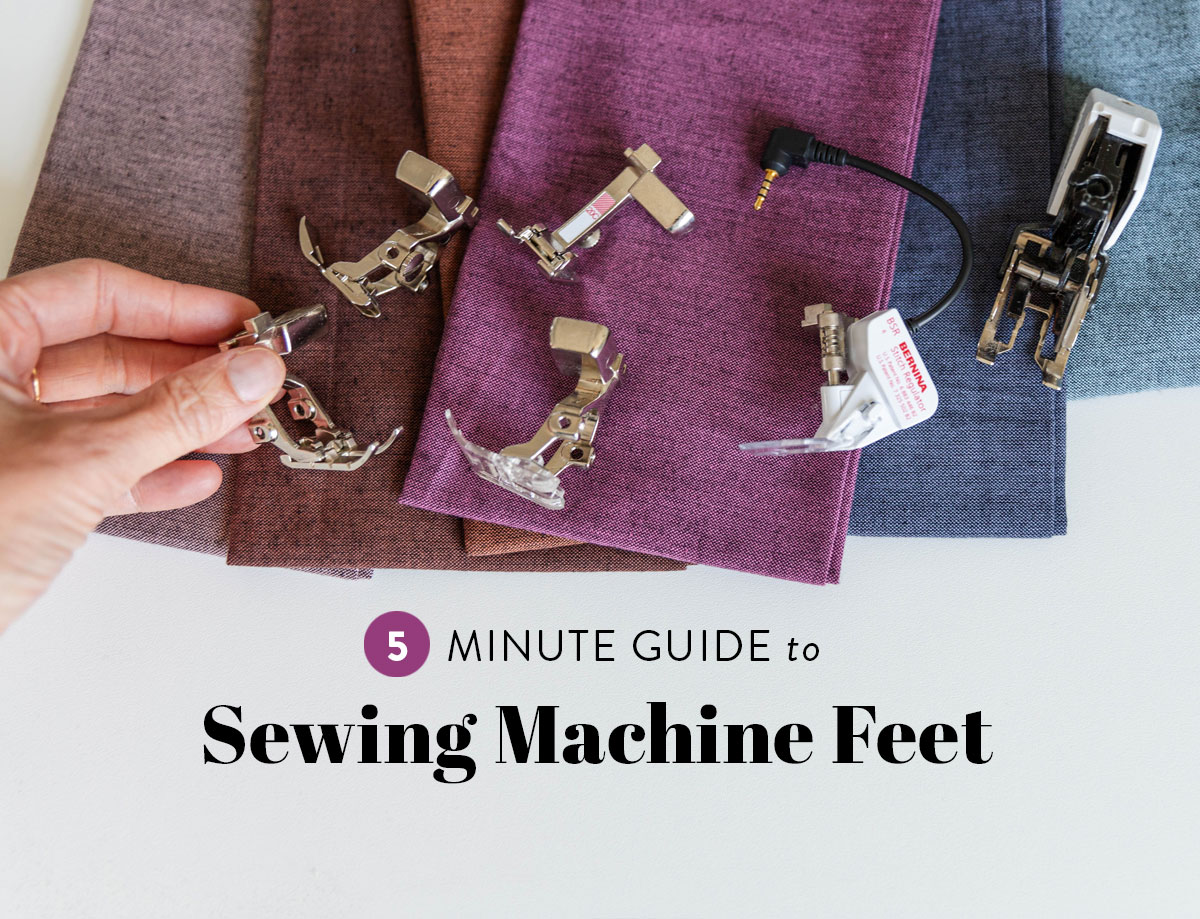

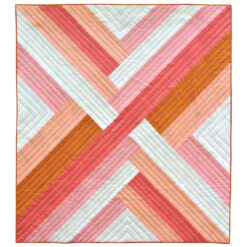
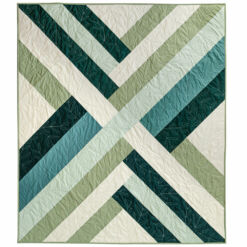
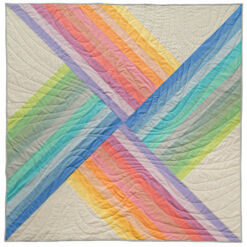
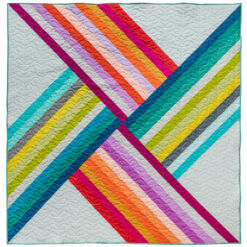
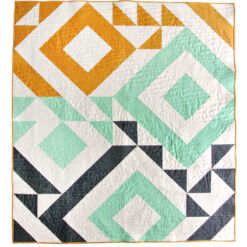
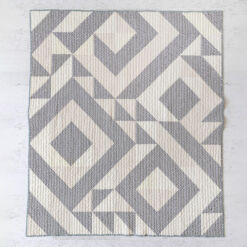
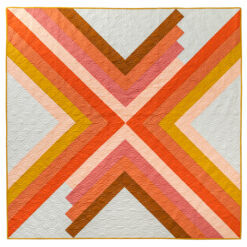
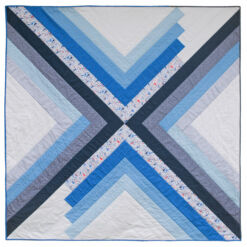
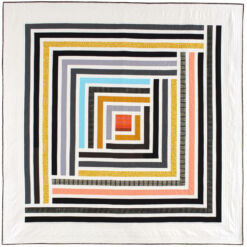
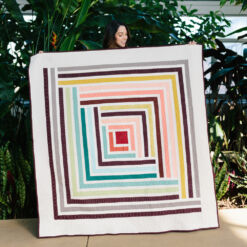
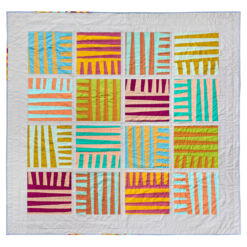
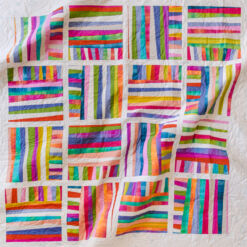
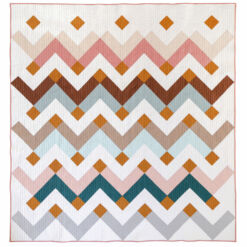
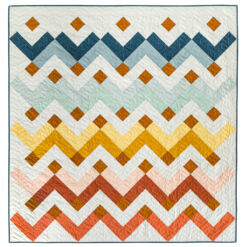
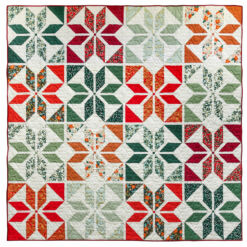
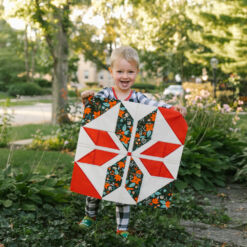
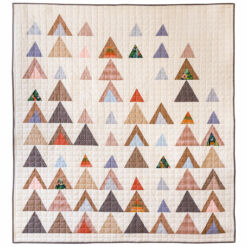
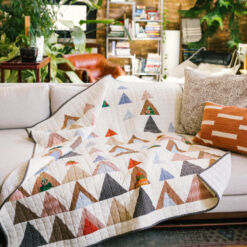




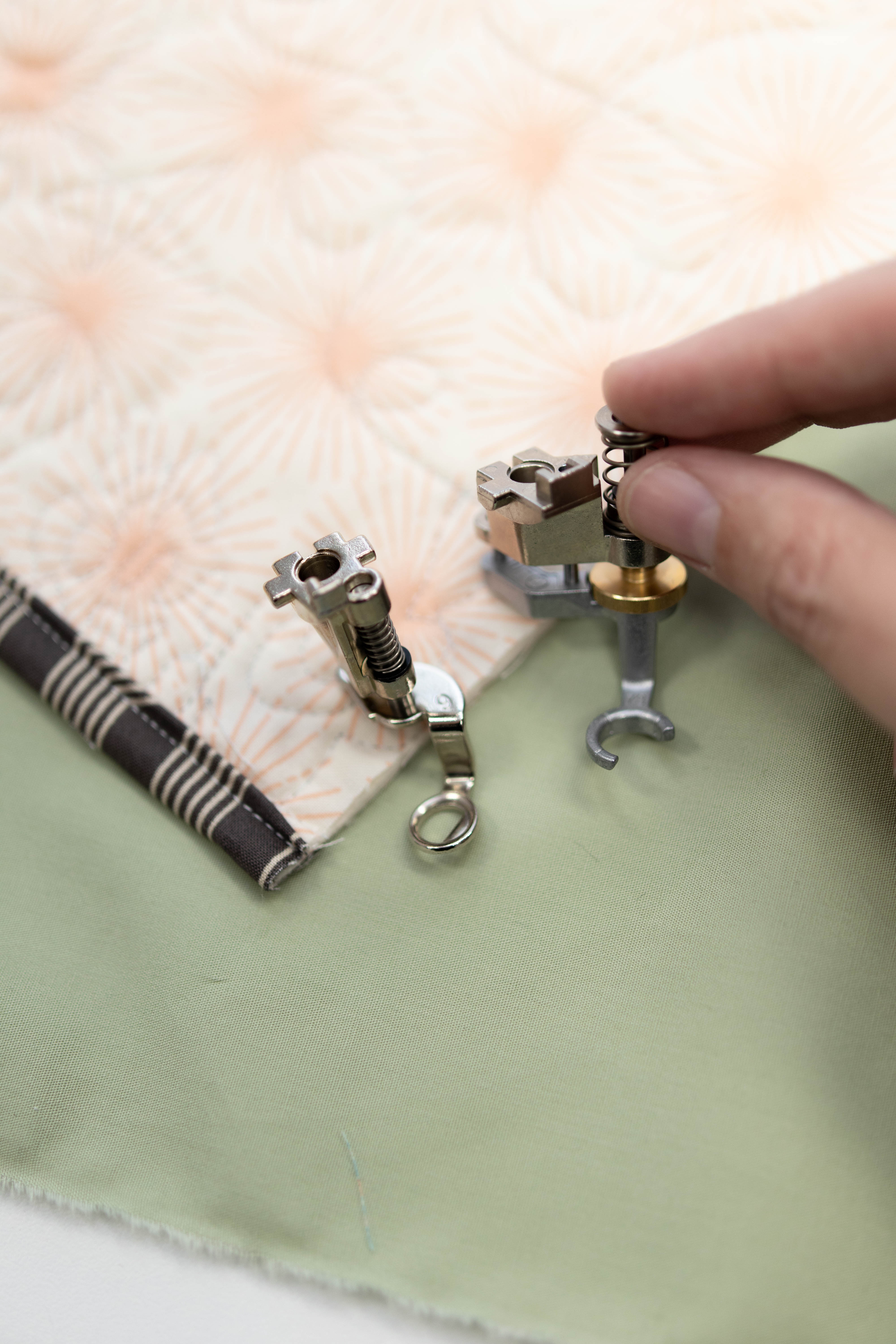

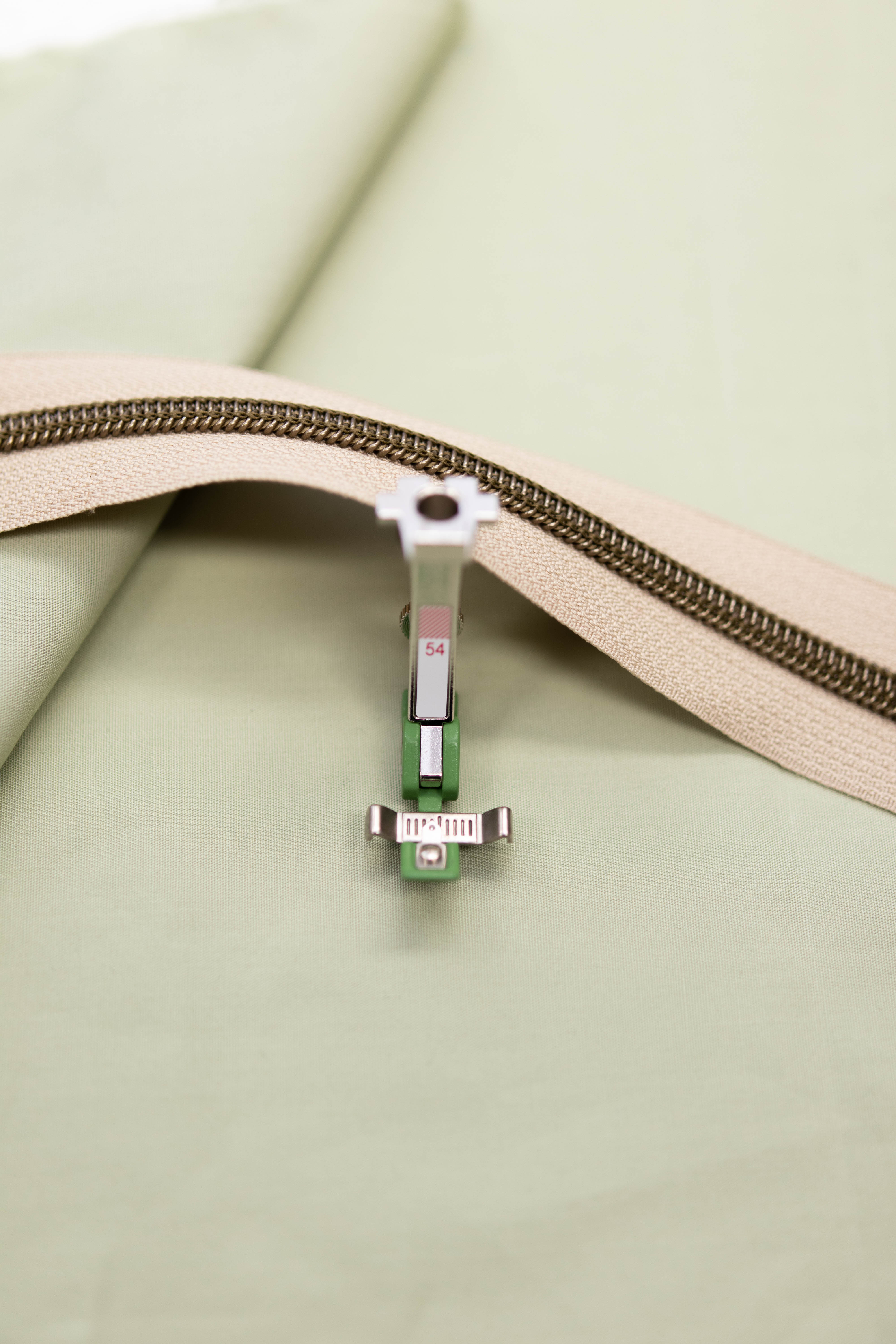






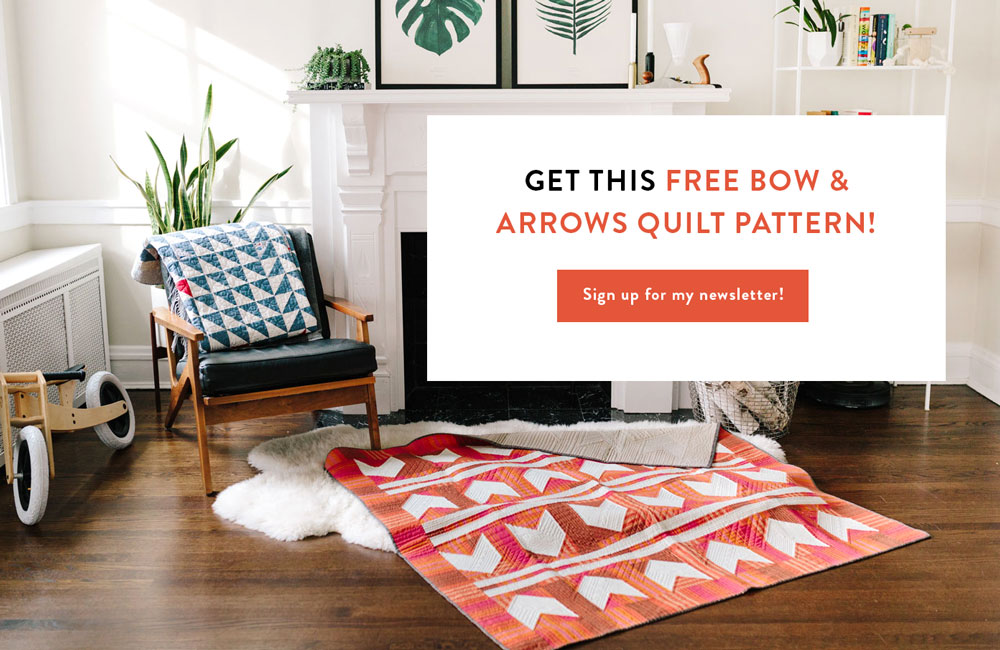
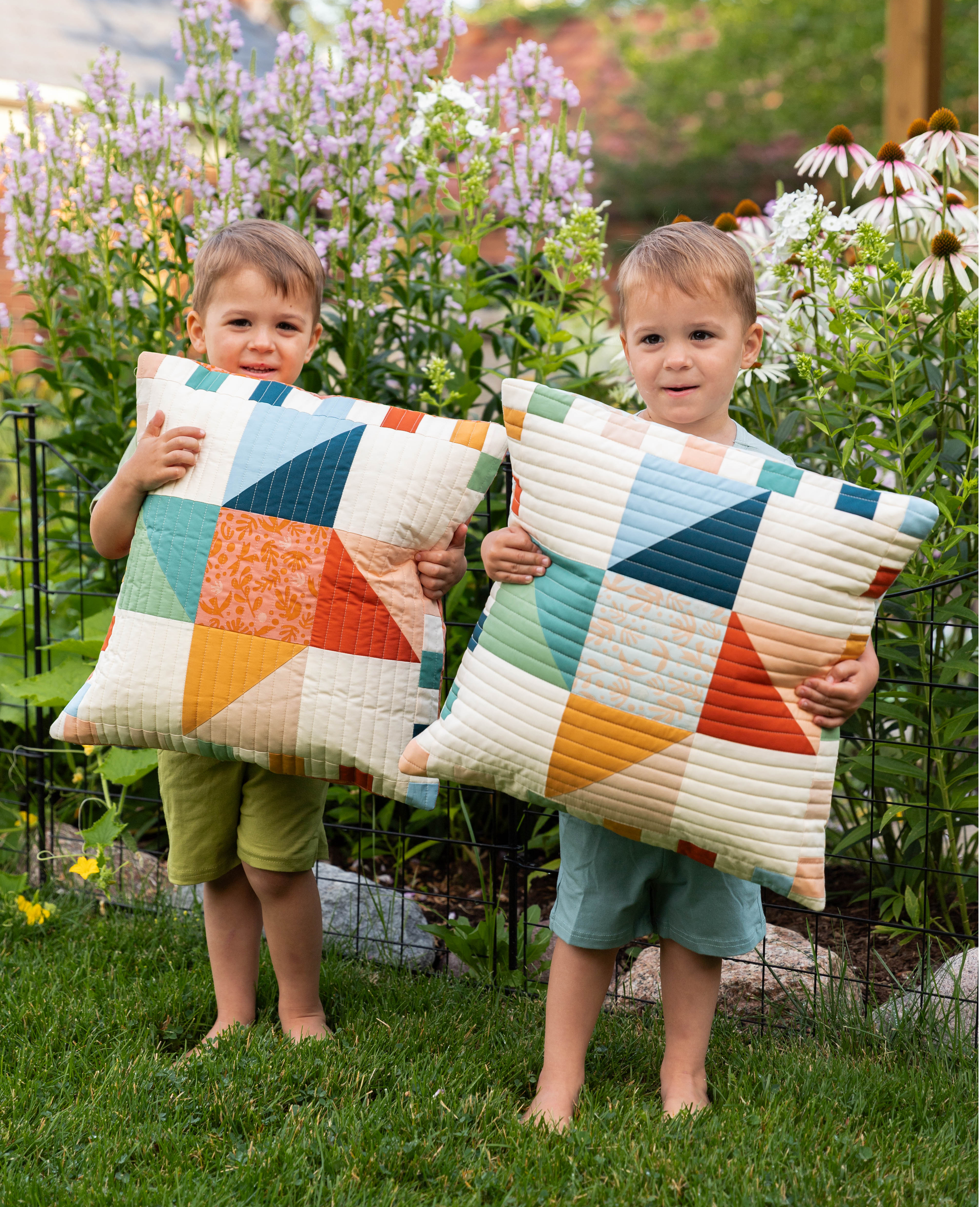

Fantastic and timely article for me! While I have been piecing for years, I recently gathered supplies to make a zippered bag and try some appliqué and machine quilting projects! This article is incredibly helpful! Thank you for the links and resources as well.
You’re welcome! So happy that the timing was great for you!
My sewing machine dealer said I could use the darning foot to free motion quilt with. My Husqvarna machine came with a clear acrylic one and it works well, within the scope of my very limited skill 😉 Check with your dealer of course, but feet can be pricey and it’s nice to try something out without having to spend a bunch of money
That’s absolutely right — you can use a darning foot for FMQ! That’s why we link to it as one option in that section, because it’s an excellent choice. Wonderful that you got that advice as well!
I noticed the foot 71 is an 8mm width. So will a 70 work as well? My Bernina only goes to 5mm,475 Quilters Edition.
Good question! Gayle recommends the 71 specifically, so that’s going to be the best bet to work with the size of binding. If you want to test if your 70 will work, you can! But it may not stitch in the space you want it to for binding.
I have a question for the hive mind here. (Please don’t laugh at my ignorance!) I have a Janome machine (3160 QOV) which is a 5 mm machine. The only Janome lap seam foot I’m finding is for a 7 mm machine. Does that mean it won’t work on my machine? And wow – who knew these feet were so expensive? $50!
That’s right — a 7mm machine has more space and should only be used with that size machine. We recommend heading to a Janome dealer to ask about a 5mm foot!
I am very interested in the foot that helps put binding on quilts! I’d love to see a video of exactly how it is done. That foot would be an amazing investment!!
You can see how that’s done in the video included in this blog post! The binding demonstrations are towards the end since it’s the end of making a quilt 🙂
This was an excellent tutorial. Thank you. I learned new techniques.
I’m a Bernina girl too, and you’ve motivated me to try that binding foot! I usually do machine bindings (attach to back and pull to the front) sometimes sewing down with a serpentine stitch or the faux piping if I want a pop. Thanks!